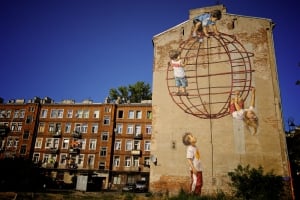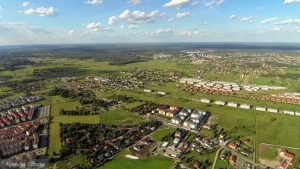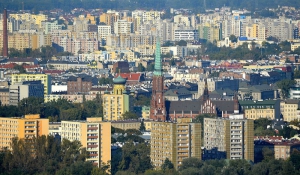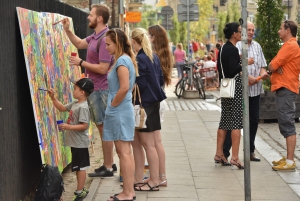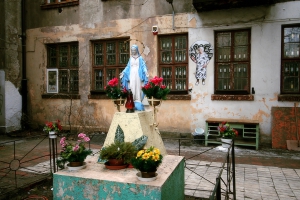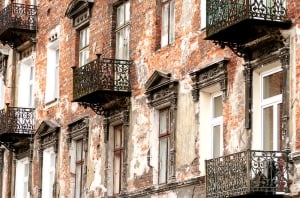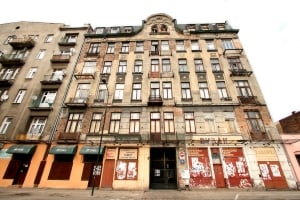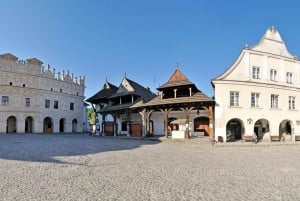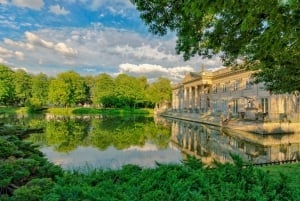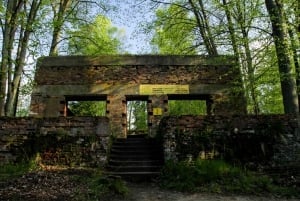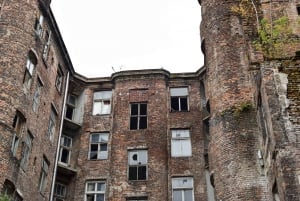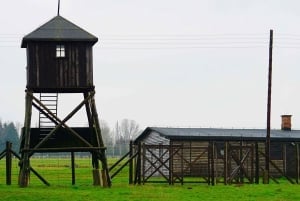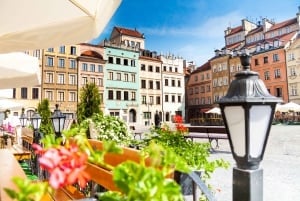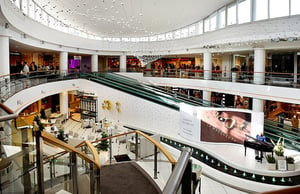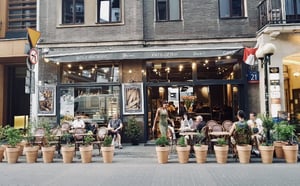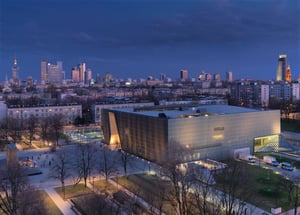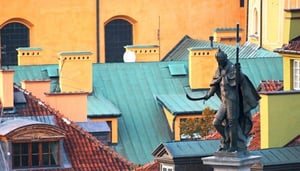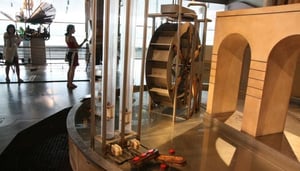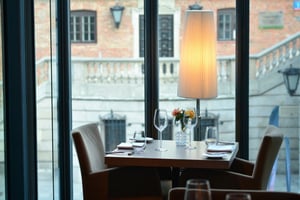East Warsaw
PRAGA
Warsaw’s right bank district of the Vistula has increased in popularity in recent years becoming one of the trendiest areas of the city in terms of culture and artistic activity. Praga was one of the only districts to remain intact after World War II and boasts some of the oldest structures in the city many of which have been transformed into stylish cafes, galleries, studios, clubs and theatres.
Zabkowska Streetis the centre of the Old Town of Praga and contains some buildings dating back to the 19th century. Ratuszowa Street is where you can find the only sign of Praga’s Renaissance past in the shape of the Church of Our Lady of Loreto which was built in the first half of the 17th century.
Another must see attraction is the Cathedral of St. Michael the Archangel and Florian the Martyr. Its two twin thin spires can be seen from the Old Town on the left bank and can be seen as a symbol of defiance against foreign rule. Its 75-metre towers and beautiful structure were built to shadow the nearby Orthodox church of St. Mary Magdalene and prevent the Russification of Poland. Unfortunately, like a lot of the city, it was destroyed during the war but the statues of the two saints it is named after survived and it was later reconstructed using original 19th-century bricks. The Orthodox Church of St. Mary Magdalene still exists and is worth also worth seeing for its Byzantine architectural style.
Mała Warszawa Art and Business Centre is one example of an old building now serving a new purpose. This factory, built in 1916, now functions as an auditorium, meeting hall, theatre hall and a space for cultural events. The Wroblewski Warehouse complex on Inzynierska Street is another space that was once a storage and transport company from the early 20th century which now houses many art galleries including the Sen Pszczolny Club, Nizio Gallery and Studio Melon. The old vodka factory Koneser was in operation for over 100 years, built using red bricks characteristics of that era and is now a cultural centre containing the Wytwornia Theatre, Kilina Bochenska Gallery of Modern Art and other galleries and cultural institutions.
Praga is not all concrete and stone. It also has many green areas. Praski Park is located not far from the Zoological Gardens and is a pleasant area for recreation. Skaryszewski Park is another green space which is located in the southern part of the city. Here there are many sports facilities, two ponds, a small lake, children’s playground as well as other interesting sculptures made by artists before the war.
For more info on Praga click here.
BIALOLEKA
In terms of construction, Bialoleka is the fastest developing area in Warsaw. Most of the new buildings in the northern and eastern parts of this area are single-family houses. Like Ursynow, Bialoleka is also a ‘bedroom’ of Warsaw. In saying that, there are a number of green areas in this district with other notable landmarks being the palace and park in Tarchomin and the historic buildings of Zespol Dworski Mostowskich.
TARGOWEK
Approximately 30% of the district of Targowek is undeveloped including Brodnowski Wood, Brodnowski Park and Wiecha Park with many allotments in the eastern part of the district. This is also where Rampa Theatre is situated. Monuments include Brodnowski Cemetery, the Jewish Cemetery, Lewicpol Fort, Wiecha Park.
REMBERTOW
Rembertow, along with Wesola and Wawrem, is one of the greenist districts in the capital with over 30% of the area covered by forests. Brodnowski Forest, Wiech and Brodnowski Park and other allotments join together to form the Kaweczyn reserve of unique vegetation. Rembertow is also characterized by having a lot of low rise buildings. The most important buildings of Rembertow are the thermal-electric power station and the Academy of National Defence.
WAWER
Wawer, next to Rembertow and Wesola, contains many green areas among them a large part of the Masovian Landscape Park with a number of reserves and lakes e.g. Lake Torfy and the temporary Czarny Staw. The Krol Jan III Sobieski Reserve is part of the complex of Wawerski forests.



